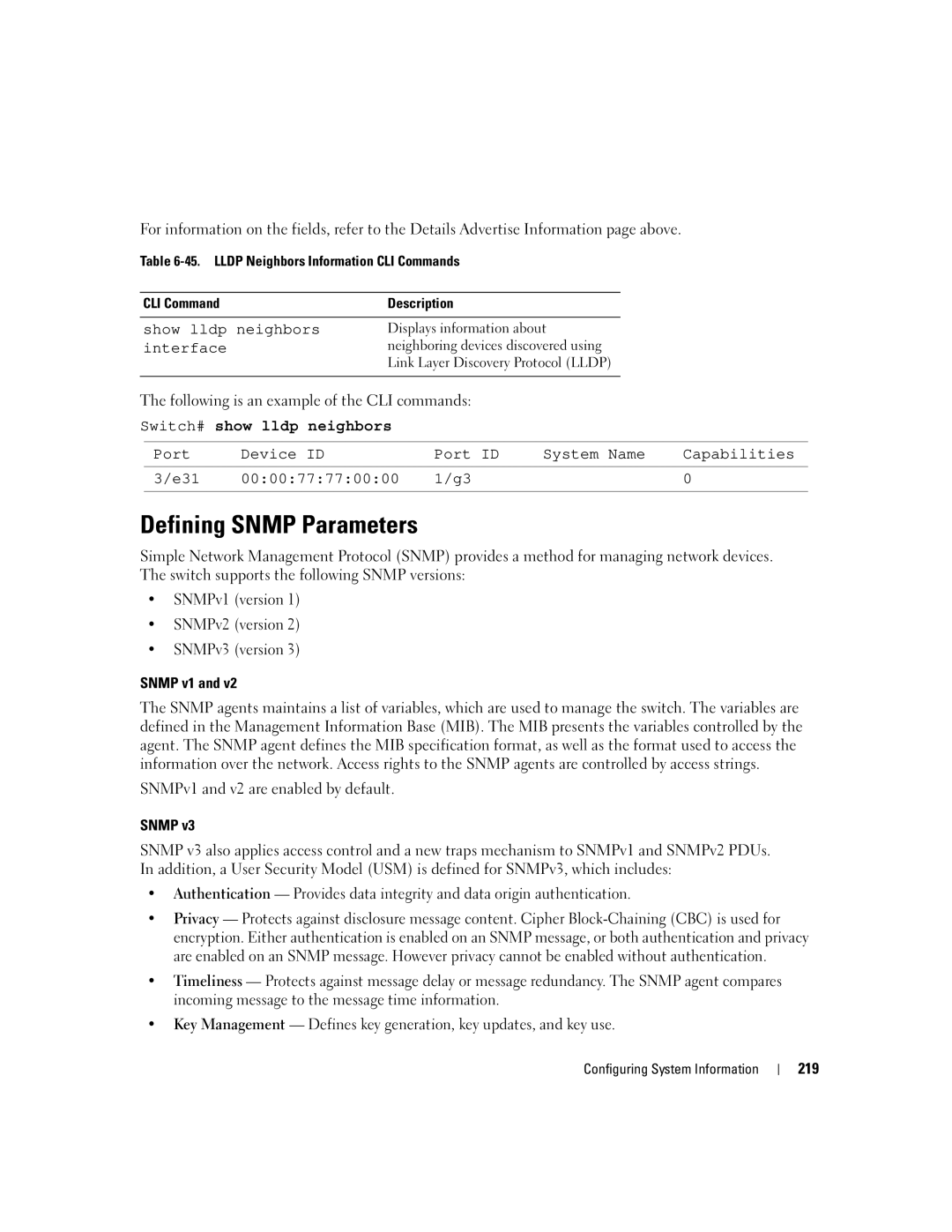
For information on the fields, refer to the Details Advertise Information page above.
Table
CLI Command | Description |
|
|
show lldp neighbors | Displays information about |
interface | neighboring devices discovered using |
| Link Layer Discovery Protocol (LLDP) |
|
|
The following is an example of the CLI commands:
Switch# show lldp neighbors
Port | Device ID | Port | ID | System Name | Capabilities |
3/e31 | 00:00:77:77:00:00 | 1/g3 |
|
| 0 |
|
|
|
|
|
|
Defining SNMP Parameters
Simple Network Management Protocol (SNMP) provides a method for managing network devices. The switch supports the following SNMP versions:
•SNMPv1 (version 1)
•SNMPv2 (version 2)
•SNMPv3 (version 3)
SNMP v1 and v2
The SNMP agents maintains a list of variables, which are used to manage the switch. The variables are defined in the Management Information Base (MIB). The MIB presents the variables controlled by the agent. The SNMP agent defines the MIB specification format, as well as the format used to access the information over the network. Access rights to the SNMP agents are controlled by access strings.
SNMPv1 and v2 are enabled by default.
SNMP v3
SNMP v3 also applies access control and a new traps mechanism to SNMPv1 and SNMPv2 PDUs. In addition, a User Security Model (USM) is defined for SNMPv3, which includes:
•Authentication — Provides data integrity and data origin authentication.
•Privacy — Protects against disclosure message content. Cipher
•Timeliness — Protects against message delay or message redundancy. The SNMP agent compares incoming message to the message time information.
•Key Management — Defines key generation, key updates, and key use.
Configuring System Information
219
